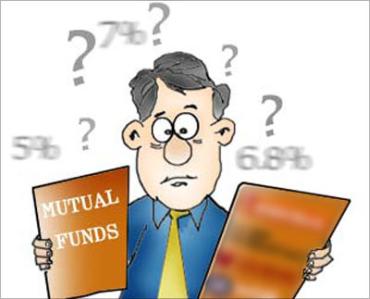
Picking the right mutual fund(s) has become a challenge nowadays especially with the growing number of fund offerings in the market. There are so many similar and different fund options available making the investor's life very confusing. Some of us visit Web sites, some others read magazines and there is also plenty of punditry available on TV. In addition to all that, here is simple checklist that could help in making your investment decision easy.
What is the fund objective?
The first thing to look for is the fund's objective. What will the fund do with your money? Will it invest in stocks, bonds or both? If in stocks, whether it will be into large-cap or mid-cap? Answers to these questions can be found in the offer document or the fund brochure and will help you in taking a call on the fund. If you are a cautious investor and don't have the appetite to bear higher risk, equity funds may not be your cup of tea.
Instead, you could choose from among debt funds / balanced funds. Therefore, before making an investment in any mutual fund scheme you should read the investment objective very carefully.
How has a fund performed over the years?
If you are comfortable with the fund's objective, you can now move to the fund's performance table. Here, one should look at the fund's short-term as well as long-term performance (say over 3 to 5 years) and should compare the same with the benchmark returns. A benchmark is the larger market index like BSE Sensex, NSE Nifty, etc.
If you see that your fund has consistently beaten the benchmark over a long period of time, then this fund can be considered as one of the better funds for making an investment. But remember, past performance is no guarantee for future returns. Hence, historical returns should only be used as an indicator of fund's future performance.

The author is co-founder and director of Bangalore-based Perfios Software Solutions Private Limited. www.perfios.com is a personal finance software solution that provides a 360-degree view of your personal finance, with very little manual intervention.

Every investment contains an element of risk. A higher return is always accompanied with a higher risk profile and vice-versa. Hence, along with performance one should also gauge risk and volatility of the fund.
Two funds with a similar return (of say 20 per cent over 5 years) can't be considered the same. One fund may have delivered this return with higher volatility when compared to other fund. But how to check a fund's volatility? Statistical measures like standard deviation or beta are used to calculate a fund's volatility.
Nowadays, many financial websites calculate these numbers and they can be used for your analysis. A higher standard deviation or beta means that the fund is more volatile and should be considered only if you have the guts to take higher risk.
Is it diversified?
This is one of the most important elements of the checklist; after all, diversification is the biggest advantage of investing in mutual funds. Hence it's very important to check out the fund's portfolio spread; whether it is confined to few stocks / bonds or is it spread across numerous securities. A highly concentrated portfolio of 8 to 10 securities can be considered risky and should be avoided.
On the other hand, an over-diversified portfolio of 80 to 100 securities can mean that the fund manager may not have the resources to keep track of all of her/his investments. Therefore a portfolio of 20 to 30 stocks / bonds is considered an ideal volume for the portfolio. Make sure your fund's portfolio is ideally balanced in terms of diversification.
Professional fund managers run mutual funds. And since s/he is the person behind the fund's success or failure, one should know how long s/he has been managing this fund. If s/he has been behind all the fund's good performances, make sure s/he is still there. Else, there are chances that you end up with a bad return going forward.
Please note that a fund with a new fund manager is like a new fund and all historical performances stand null and void.
How much does it cost?
Nothing comes for free. Mutual funds too charge certain amounts of money to run the fund. Though the entry load has been removed, the fund charges fund management fee (to pay for fund manager's salary) and administrative charges (to undertake day-to-day operations of the fund) on an annual basis. As per SEBI guidelines, these two charges together can't exceed 2.5 per cent of the fund's assets. These charges are almost similar across funds, but one should also look for 'hidden' charges like cost of early redemptions etc to avoid unpleasant surprises later on.
Conclusion
The above checklist may not be comprehensive but will definitely make your life simple and logical as far choosing from among myriad mutual fund options are concerned. Answers to the above questions will certainly provide the basic information that you need to become a better and informed investor.